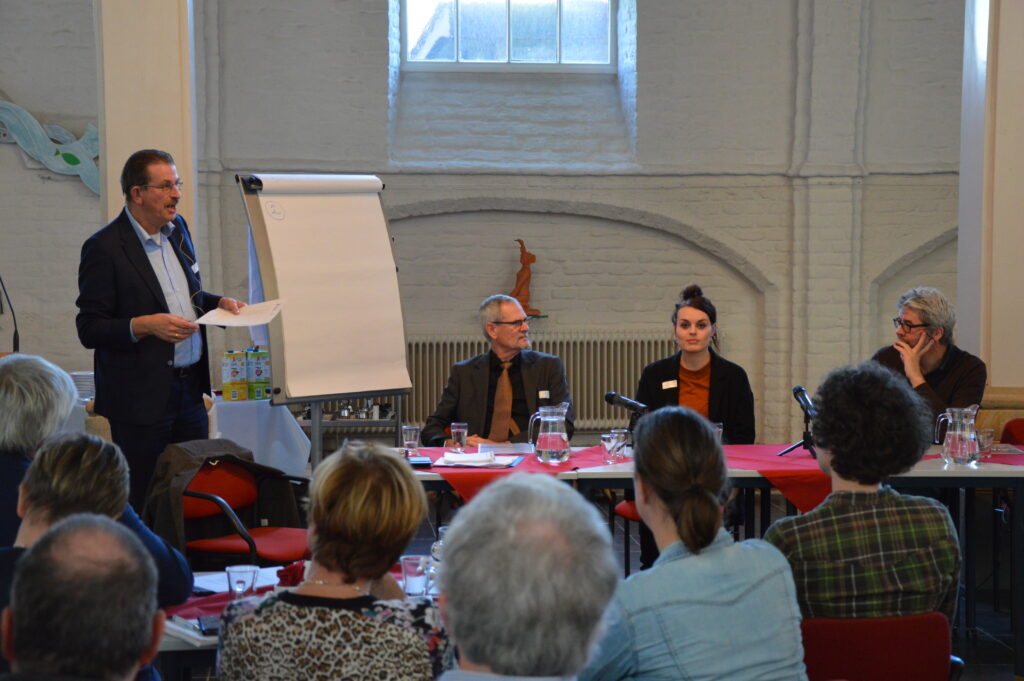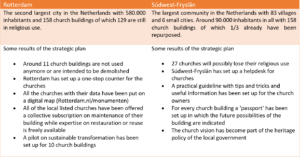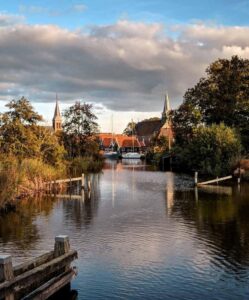
Heritage is all about the things we cherish, the things we love. And religious buildings are preeminent symbols of love. Therefore, it is important to think ahead about the challenges these buildings are facing in the future. But even more so, to think about what the churches and their buildings can bring to society. Because church buildings are so much more than heritage and can become key factors in several transitions society is going through. In this article, I would like to illustrate a bottom-up strategy that has recently been developed in the Netherlands.
Since 2013 a coalition of all levels of the Dutch government, church representatives and heritage organizations are working on the future of religious heritage. From the perspective of the Cultural Heritage Agency of The Netherlands, church buildings are only 4% of the listed monuments but take up about 40% of our yearly budget. This forty per cent indicates the dire need church buildings have for maintenance. But it also indicates the way the Dutch society values these buildings and what they represent.
Dutch society indeed is very much founded on religion. Nowadays though, less than half of the Dutch people consider themselves to be religious. The Netherlands is at the forefront of secularization. The consequence of this trend is noticeable in the use of church buildings. For example, studies done in 2021 indicated that 8 out of 10 catholic parishes are in financial need. Already years before this enquiry the archbishop of the Netherlands had indicated that he probably would have to close around 265 of the 280 churches in his own diocese. This signal among others was a clear call for action on which the Dutch Cultural Heritage Agency, together with our partners, introduced a new nationwide strategy.

Meeting of the Cultural Heritage Agency of The Netherlands about “church visions” in Zeeland.
A future for all
A key element in this new approach is to promote that local governments together with the churches and local stakeholders pro-actively design a strategic plan for all church buildings within the city limits. In essence, this strategy is built upon five principles.
- It is crucial that a long-term perspective is developed for church buildings. Society should not only (re)act when problems arise. Such a long-term strategic plan is in Dutch called a kerkenvisie (church vision).
- This strategic plan should involve all church buildings within the borders of a local government. Regardless of the denomination of the churches (so also including synagogues, mosques, or temples), age, current use, ownership, or possible status as a monument. Where parties previously mainly spoke about their own subset of church buildings, be it the churches of the own parish or be it the churches that are listed monuments, the basic principle now is that all religious buildings must be viewed in conjunction.
- The strategic plan is not only about the churches that will close and must be repurposed. Even if the coming years churches in the Netherlands will have to close, still most of the buildings are being used as a place of prayer. A lot of these buildings will have issues regarding energy efficiency in combination with sustainability. Other churches may want to consider multiple-use and must think about how to fit in the facilities needed. So almost every church building faces its own combination of challenges.
- Local support is crucial. Just as the churches were founded and maintained locally, the future of church buildings also rests on local shoulders. Therefore, it is important that all relevant parties have a seat at the table to ensure sufficient support for future use.
- The task is complex and unique per city or village. For example, in some cities, local committees must consider 10 church buildings of the same denomination, while in other cities more than 150 buildings of dozens of different religions are objects of reflection. Two examples of this are compared below. It requires customization in drawing up strategic perspectives and not applying predefined formats. That is why our partnership supports local parties with all kinds of tools, knowledge, and experience without forcing blueprints upon them.
Local differences among cities
Two examples of a church vision where the urban city Rotterdam is compared with the rural community of Súdwest-Fryslân with almost the same amount of church buildings. Both cities formulated a strategic plan, a church vision, that took them around one and a half years. Both did research on the buildings, held surveys and organized plenary and round table meetings. But in the multireligious city Rotterdam with more than half a million inhabitants a lot of time went into finding out what different religious groups were involved and how to address them. While in rural Súdwest-Fryslân every church is well known within the community, and they are almost all of Protestant nature.

Harvesting

Sudwest Fryslân
The promotion of this strategy, backed by a national subsidy scheme directed at local governments, started in January 2019 and ended in December 2021. Participation was voluntary. By the end of April 2021, we could conclude that 68% of all the local governments are working on a “church vision”. Even more important, together they are thinking about the future of 76% of the 7.110 church buildings that are present in the Netherlands.
In the process of creating a “church vision,” the churches indicated that it not only helped them think about the future of their buildings, but it gave them a chance to meet other church organizations, share experiences, generate new ideas and create initiatives. For the communities, it was important that they are heard and can bring their commitment, ideas, and knowledge to the table. But most importantly, they are involved in what is going to happen with ‘their’ churches and will not face too many surprises. The local governments, who are the ones that organize the planning process, discovered not only properties with possibilities but also found out that the churches gave them access to several policy issues.
Church buildings turned out to be key elements in social cohesion, the vitality of urban neighbourhoods or rural villages, touristic profiling, creating a green and healthy environment and working on sustainability goals. All in all, the instrument of a church vision is ensuring a better future for church buildings and creating a better environment for inhabitants at the same time.
To conclude
Looking back, for a long we considered the future of church buildings to be an exclusive issue for the heritage sector and or the churches. But since the dialogue has been organized between the churches, governments, the heritage sector, and the public we found out that the future of the church buildings addresses all kinds of actual questions. It now has become an important issue for society as a whole.
By Frank Strolenberg, Manager of Future Religious Heritage at the Cultural Heritage Agency of the Netherlands.





Follow us: